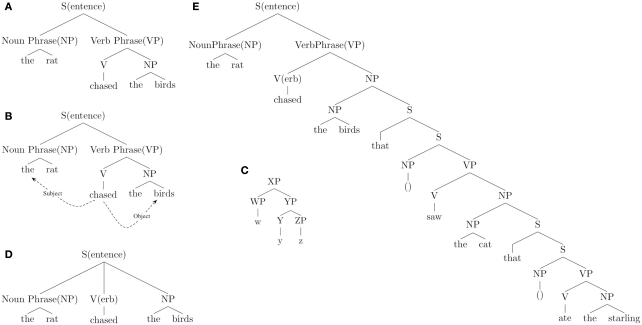Figure 1.
The hierarchical and asymmetrical nature of sentence syntax. (A) The conventional syntactic structure associated with a simple English sentence. Note that the structure is asymmetrical, as highlighted in part (C) below. (B) The grammatical relationships “Subject” and “Object” are defined solely with respect to the hierarchical properties of the syntactic representation. (C) Abstract phrase structure representation for the sentence, highlighting the core asymmetry such structures, along with the “grounding” of a phrase of type Y, YP, on a particular word of type Y. Such structures comprise the core “molecular shapes” of syntax in language. (D) A symmetric syntactic structure associated with the same sentence, pointing out that there is no longer a distinction between “Subject” and “Object.” (E) A more complex syntactic structure associated with a sentence that displays hierarchical, self-embedded containment relationships, with Sentences embedded within other Sentences, and Noun Phrases within Noun Phrases. Note that the basic asymmetric structure of (C) is replicated at each level.

